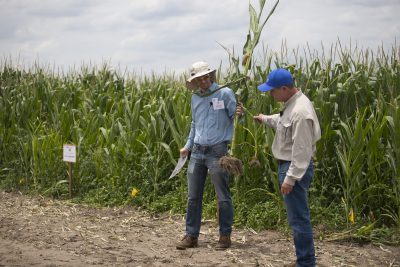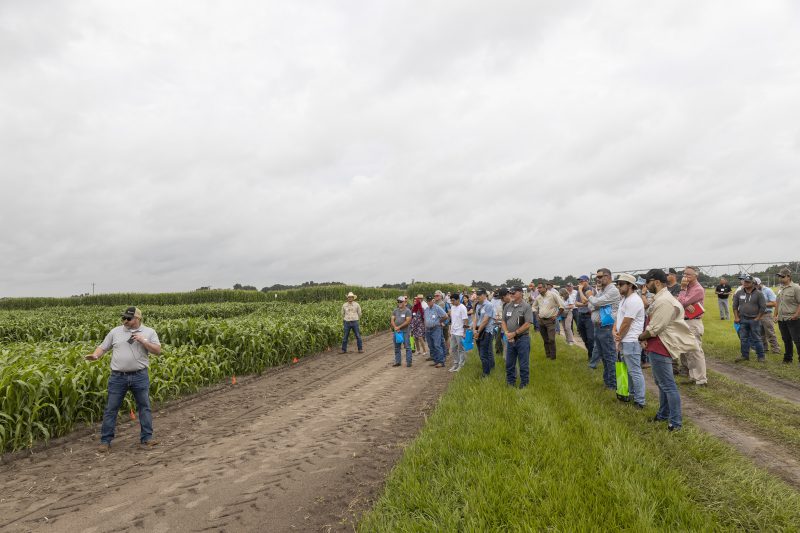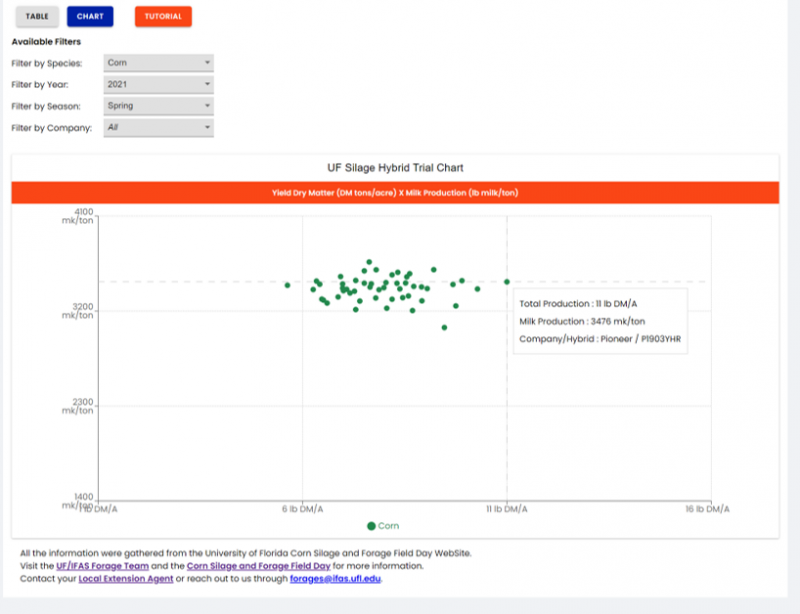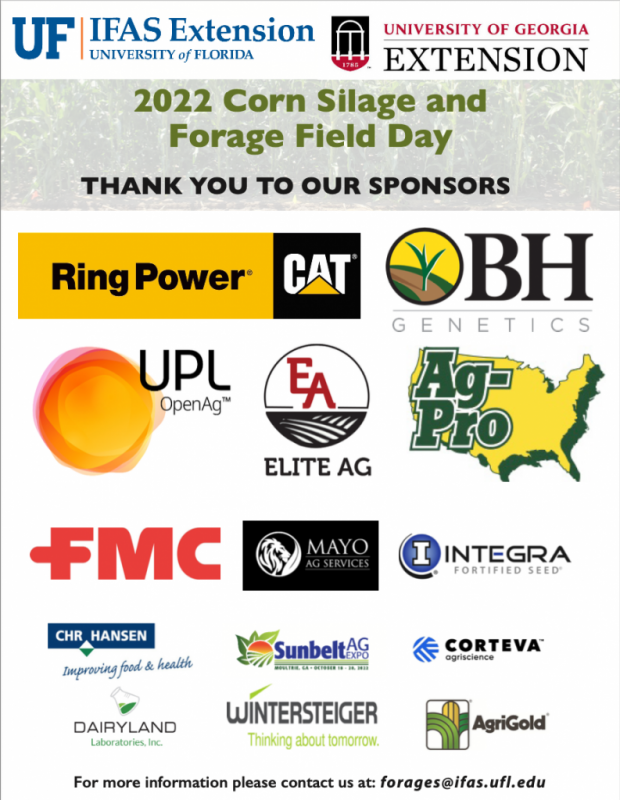Marcelo Wallau, Diwakar Vyas and Ashley Kuhn, UF/IFAS Agronomy Department

Dr. Jose Dubeux and Dr. Zane Grabau presentation on Nematode Management on Corn at the 2022 Corn Silage and Forage Field Day. Photo by Cat Wofford, UF/IFAS Communications
Corn and sorghum silages are among the most important feedstuffs for the dairy industry in the state, and they have been gaining interest with beef cattle producers as well. Selection of genetic material is extremely important to the successful utilization of a silage crop. Across varieties there is a large range of adaptation, traits, productivity, and pests/disease tolerance. Top-performing hybrids can be 30% more productive in terms of milk production per acre compared to average varieties, with the same amount of inputs. This can have a huge impact on the bottom line of dairy systems.
Given the number of companies and hybrids available in the market, it can be quite overwhelming to pick the right material for planting. Since 2002, the UF/IFAS Agronomy and Animal Science faculty have been testing commercial corn and sorghum hybrids to provide information on productivity and nutritive value for Florida farmers. Initiated by Jerry Wasdin and Dr. Carol Chambliss, and currently chaired by Drs. Marcelo Wallau and Diwakar Vyas, the program has tested hundreds of materials throughout the years and has developed a great partnership with the seed industry. In 2022, we are testing 63 different hybrids of corn and 23 sorghums and sorghum x sudan, submitted by 19 companies. The result summary reports from the hybrid trials were previously stored in Excel and pdf files, but now can be easily accessed on the new “UF Silage Hybrid Decision Tool.” This tool is a decision support instrument to help farmers choose between a myriad of corn, forage sorghum, and sorghum x sudan hybrids that have been tested since 2008. It is a web-based, user-friendly and simple tool that helps sort through seasons (spring or summer planting), years, companies, by ranking hybrids by performance, quality or expected animal productivity. It also brings information on multiple quality traits, along with disease and lodging scores for some of the materials. It includes over 600 hybrids of corn and sorghum, partnering with more than 50 companies and seed brands. The tool can be accessed on the Forage Team website under Resources and News, or directly with this link: UF Silage Hybrid Decision Tool
This tool was recently launched at the 2022 Corn Silage and Forage Field Day, a biannual event in partnership with the University of Georgia, which brings together industry partners, producers, and Extension faculty to the UF/IFAS Plant Science Unit in Citra. This year, the event was held on May 26th, and participants had the chance to tour the hybrid trials and participate in multiple lectures on forage and silage production. This event is possible because of the strong partnership between seed and supply companies and the University. Over the years, multiple renowned speakers came to lecture at the field day, and presentations are available under “past presentations” on our website.
More information on corn and sorghum silage production can be found on a series of Extension documents, through our portal called, “Ask IFAS“. If you have any concerns or suggestions, please email the Forage Team at forages@ifas.ufl.edu, or contact your local extension agent.
–
How to use the tool
The UF Silage Hybrid Decision Tool is a simple query tool to view and sort through data. On the main page (Figure 1), the user can choose species, and filter by year, season, and company (arrow 1). The table below can be ordered by any column (arrow 2) just by clicking on the parameter to be evaluated. Clicking twice will change from ascending to descending order. Bold values indicate top performance within a specific year and season, but do not compare across trials. It is also possible to download (arrow 3) the sorted data to Excel or PDF format. The “>” symbol on the left (arrow 4 in Figure 2) opens another array of information on each hybrid. A secondary page presents a chart view of the sorted hybrids, comparing total dry matter production per acre to estimated milk production per ton of silage (Figure 3). By hovering the mouse on the specific data point, a box pops up with information on productivity, company, and hybrid. This tool can be viewed both on computers or cell phones.
–
–
–
- UF/IFAS 2025 Top Rancher Challenge Showcases Youth and Adult Talent - July 11, 2025
- Cow Talks: Special Guests Discuss the Impact of H5N1 Avian Influenza on Agriculture - April 25, 2025
- Why is this weed here? Weed Management in Pasture Systems - February 28, 2025






